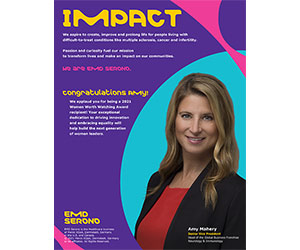by Brenda Mullins
Chief Diversity Officer
Aflac
We all know that person—the one who buys a lawnmower and says he or she is a landscaper. What about the one who takes photography 101 and tells you he or she is the perfect person to take your wedding photos? They may mean well, but perhaps they are overstating their qualifications a bit.
“When it comes to diversity issues, you can’t fake it. You either practice diversity as part of the culture or people will figure you out.”
In corporate America it is proven time and again that consumers, employees and stakeholders crave authenticity. If you say you are something, then you need to not only talk the talk but walk the walk. When it comes to diversity issues, you can’t fake it. You either practice diversity as part of the culture or people will figure you out.
As Chief Diversity Officer at Aflac I am fortunate to work in a place where diversity is ingrained in the fabric of the company, which brings me to what I believe is the first mistake that diversity professionals make. To be effective, you have to first gain buy-in at the very top—and it must filter down from there.
I speak with diversity officers from across the nation at trade events and conferences and I often hear stories from people who are struggling to make diversity a priority at their company. So the first thing I ask is whether or not the company has an official policy. Is it sanctioned from the top executive? Does your chief executive wear his or her diversity policy on his or her sleeve or is it a means by which to appear on a list? Until you get there, you are bound to struggle.
Circling back to the “landscaper” and “photographer” examples, the second mistake I have often encountered is the company or professional that says one thing but the facts don’t match. Diversity, for example, is not the same as affirmative action any more than cutting the grass is landscaping. Diversity is a commitment—a part of the business plan to hire, retain and promote quality workers regardless of race, gender or orientation. In doing so, the company proves its authenticity and produces a workforce as diverse as the marketplace.
Finally, diversity is not a project, it is a culture. Numbers are important, but the professional whose sole interest is in reaching a quota doesn’t help his company become diverse; he’s just counting the numbers. That person is making the mistake of viewing diversity as only numbers-driven when in fact true diversity resides in variety of thought. So the key mistakes to avoid are:
- Failing to secure top level support
- Failing to match rhetoric with reality
- Treating diversity as a project, not a commitment
It has been my experience that professionals that resolve these issues first tend to succeed more often than others.
This article has been sponsored by:
Women Worth Watching

Brenda Mullins
Chief Diversity Officer
Aflac
Brenda J. Mullins is second vice president of Human Resources and diversity officer for Aflac Incorporated. Ms. Mullins oversees the Aflac Diversity Council and developed the framework for expanding Aflac’s diversity efforts through the Five R’s: recruitment, retention, relationships, reinforcement and recognition.






